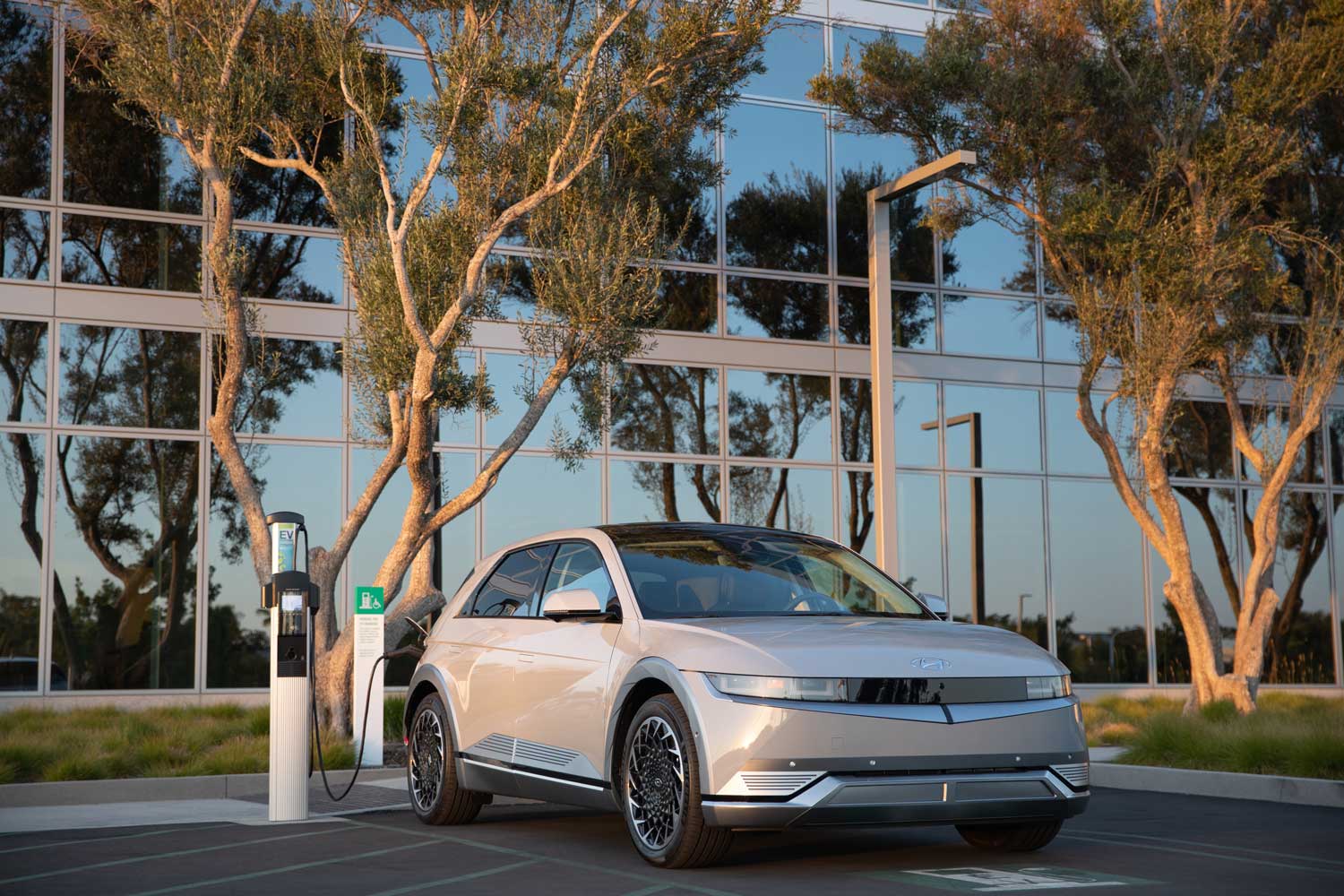250 kWh or Two Years: What's the Better Free-Charging Deal for a New EV?
Not every free charging deal offers the same perks.
 Hyundai
Hyundai
Getting something for free is usually a good thing—unless it’s, say, a paper bag full of angry hornets or a bucket brimming with peevish electric eels. When it comes to electric cars, trucks, and SUVs, however, getting free charging is always a good thing. That said, which option is best: free kilowatt-hours or free time at a charger? It depends on you and your needs.
Many car companies now offer some degree of free charging with the purchase of an electric vehicle (EV). Some deals offer a set number of kilowatt-hours of recharging, while other deals offer a set period of unlimited recharging.
Choosing the right EV could be simplified by searching for the best free recharge offer attached to the type of vehicle you want.
Kilowatt-hours versus time
One of the hottest-selling electric vehicles at the moment is the Ford F-150 Lightning. This full-size pickup truck delivers anywhere from 230 to 320 miles of range, depending on the size of the battery pack. While the wait for an F-150 Lightning is considerable, owners are still being treated to an offer of 250 kWh-worth of free charging at the nationwide Electrify America recharging network.
Considering the F-150 Lightning battery pack is either 98 kWh or 131 kWh in capacity, this works out to about three recharges that can be used over a two-year period. In terms of money spent, you’d be saving around $40 to $50 in charge fees. This amount may vary depending on the average cost of electricity where you live, of course.
How much charge will you need?
While this deal from Ford is perfectly fine, other EVs have recharging incentives that could save you more money. The Hyundai Ioniq 5 presently offers 30 minutes of free DC fast-charging at the Electrify America network for up to two years. Using this tech, the Ioniq 5 can recharge from 10% to 80% in about 18 minutes.
A similar deal is attached to the new Cadillac Lyriq electric SUV, except there’s no charging time limit during the two years of free fast-charging (courtesy of the EVgo network). It could be worthwhile to know which of these two networks—Electrify America or EVgo—is more convenient in your region or where you routinely travel. Also keep in mind that using DC fast-charging on a daily basis could limit the overall longevity of your EV’s battery pack.
Timing and location are everything with an EV
Does 30 minutes of free fast-charging make the most sense for your driving habits? Is Electrify America or EVGo more prevalent in your region? And where do you plan to do the majority of your EV charging?
By and large, overnight home charging is most common, and that could limit the benefits of free charging incentives—or at least narrow the gap between some of these offers.
While DC fast-charging is great when you’re in a hurry, it’s not something you want to rely on for everyday driving. This makes a deal like Mazda’s $500 credit toward the installation of a ChargePoint Home Flex charger for its MX-30 EV an interesting alternative. Knowing how you’ll use your EV—and having a general idea of your future charging routine—can help you identify the best free charging deal.
Written by humans.
Edited by humans.
 Nick Kurczewski
Nick KurczewskiNick Kurczewski is a freelance automotive journalist based in the New York metro area. With approximately 20 years of experience, he has covered all aspects of the car world, from the pit lane at the 24 Hours of Le Mans, to car shows around the world, and a Zamboni lesson in Lower Manhattan. He’s also adept at providing helpful car advice and steering people towards the ideal car, truck, or SUV for their driving needs.
Related articles
View more related articles